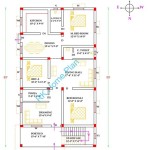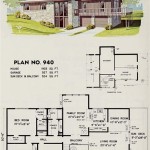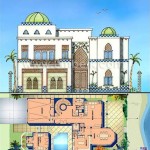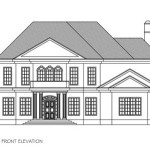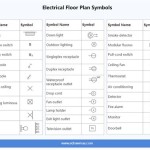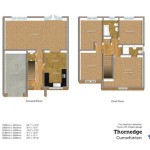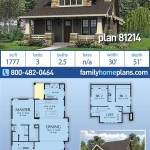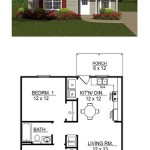Inverted Living House Plans: Maximizing Views and Functionality
Inverted living house plans, also known as reverse living house plans, flip the traditional home layout on its head. Instead of placing the main living spaces on the ground floor, they elevate them to the upper levels. This design choice offers numerous benefits, particularly for homes situated on sloped lots or with scenic views.
Key Advantages of Inverted Living
*Enhanced Views:
Elevating primary living spaces allows homeowners to capitalize on panoramic vistas, whether of mountains, oceans, or cityscapes. *Increased Natural Light:
Upper floors typically receive more sunlight throughout the day, leading to brighter, more inviting living spaces. *Privacy:
Locating bedrooms on the lower floors creates a sense of seclusion and separation from the more public living areas. *Outdoor Living Integration:
Inverted designs often incorporate decks or balconies connected to the upper-level living spaces, maximizing outdoor enjoyment.While initially popularized in coastal and mountainous regions, inverted living has become increasingly prevalent in various settings. This design approach addresses the needs of modern homeowners seeking to optimize space and connect with their surroundings.
Suitable Locations for Inverted Living Plans
*Sloped Lots:
These plans effectively utilize the natural elevation changes, minimizing excavation and maximizing the usable space. *Waterfront Properties:
Elevating the main living areas provides unobstructed water views and enhances the connection to the natural environment. *Narrow Lots:
Inverted plans can create a smaller footprint on the ground, leaving more space for outdoor amenities or landscaping.The layout of an inverted living house plan typically places the bedrooms, bathrooms, and utility areas on the ground floor. This level may also include a garage or secondary living space. The upper floor houses the kitchen, dining area, living room, and often a deck or balcony.
Considerations for Inverted Living Designs
*Accessibility:
Navigating stairs may pose challenges for individuals with mobility issues. Incorporating an elevator or lift can address this concern. *Heating and Cooling:
Upper levels can experience greater temperature fluctuations. Proper insulation and efficient HVAC systems are essential. *Privacy:
While the elevated living spaces offer views, they may also be more exposed to neighbors. Careful window placement and landscaping can mitigate this.The flexibility of inverted living plans allows for a wide range of architectural styles and sizes. From compact cottages to expansive modern homes, the inverted layout can be adapted to suit various needs and preferences. The focus remains on maximizing the potential of the site and creating a home that embraces its surroundings.
Design Elements for Inverted House Plans
*Open Floor Plans:
Creating a seamless flow between the kitchen, dining, and living areas enhances the sense of spaciousness and promotes interaction. *Large Windows and Doors:
Maximizing natural light and framing views are key elements in inverted living designs. Floor-to-ceiling windows and sliding glass doors create a strong connection to the outdoors. *Outdoor Living Spaces:
Decks, balconies, and patios extend the living space and provide opportunities for relaxation and entertainment. *Strategic Landscaping:
Carefully planned landscaping can enhance privacy, create visual interest, and complement the overall design.Choosing an inverted living house plan requires careful consideration of the site, lifestyle, and budget. Working with an experienced architect or builder is crucial to ensure the design effectively addresses these factors and delivers a functional and aesthetically pleasing home.
Cost Implications of Inverted Living
*Foundation and Structural Engineering:
Depending on the site and design, the foundation and structural elements may require specialized engineering, potentially impacting costs. *Staircase Design:
The staircase becomes a prominent architectural feature and may involve more complex and costly construction than in a traditional layout. *Utilities and HVAC:
Running utilities and HVAC systems to the upper levels may require additional materials and labor.Despite these potential cost considerations, the benefits of inverted living often outweigh the expenses. The enhanced views, increased natural light, and unique living experience contribute significantly to the home's value and overall appeal.
Long-Term Value and Resale Potential
*Desirability:
Homes with exceptional views and thoughtful designs are often highly sought after in the real estate market. *Functionality:
The efficient use of space and connection to the outdoors make inverted living homes appealing to a wide range of buyers. *Uniqueness:
The distinctive layout sets these homes apart, adding to their appeal and potentially increasing their resale value.Ultimately, the decision to build an inverted living home is a personal one. By carefully weighing the advantages and disadvantages and working with a qualified professional, individuals can create a home that perfectly suits their needs and maximizes the potential of their property.

65 Reverse Living House Plans Ideas Design

50 Upside Down Homes Ideas House Plans Design Floor

65 Reverse Living House Plans Ideas Design

Upside Down Living The Trend Turning Traditional Interior Design On Its Head

Inverted Living Contemporary Style House Plan 7884

Upside Down Living Home Designs Upper 2 Y In Qld Nsw Vic Sa Tas

65 Reverse Living House Plans Ideas Design

Upside Down Living Home Designs Plans Perth Novus Homes

Reverse Living House Plans Beach Homes W Inverted Floor

65 Reverse Living House Plans Ideas Design

